Driving Safely On and Around NMSU Campus is Essential. With the increased congestion on campus in vehicles, utility carts and pedestrian traffic; safety and caution are absolutely critical.
Please follow these basic safety guidelines to ensure a safe campus and please REMEMBER, the pedestrian always has the right of way.
- Look and yield the right-of-way to individuals
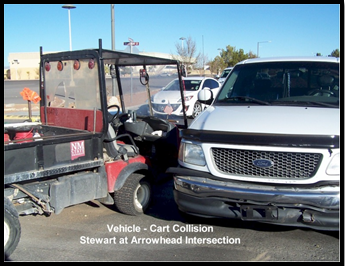
walking, jogging, or biking. - Watch for pedestrians and vulnerable individuals in parking lots.
- Watch for pedestrians when entering campus
streets from parking areas and driveways. - Note the potential for individuals on the sidewalk
or nearby areas to dart across your pathway. - Before making a turn, stop fully and look in all directions for pedestrians and bicyclists crossing.
- Wait for a bicyclist to complete the trip through
the intersection [Never turn right immediately
after passing a cyclist]Stop with other stopped vehicles at crosswalks [rather than continuing], as they may be allowing a pedestrian to cross the street.Yield to anyone crossing the street when
turning left on a green light.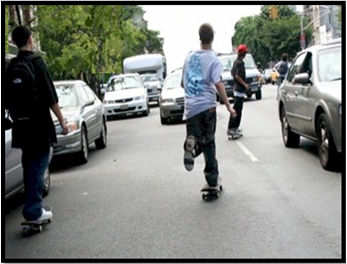
- Watch for surprising changes in direction,
especially by cyclists or carts avoiding road hazards. - Check for approaching cyclists, when parallel parked, before opening your door.
- Leave sufficient space when passing vulnerable
road users and take every possible precaution to avoid collision.
Eliminate Distractions When Driving
- Do not allow technology [cell phones, text messaging, web browsing, adjusting equipment] to divert your attention.
- Do allow cell phone calls to go to voicemail.
- Never read notes, write reminders, or take down
numbers.
- Avoid eating, drinking, and changing controls.
- Never look for lost or reach for fallen items.
- Stay focused and alert at all times. Practice short glances and avoid prolonged staring.
- Do conduct personal grooming before leaving or after reaching your destination.
- Other distractions to avoid when driving: reading print media [including maps], mediating disputes between children or adults, watching in-car video, and adjusting
the GPS or navigation system.
- Pedestrians, even university students and employees,
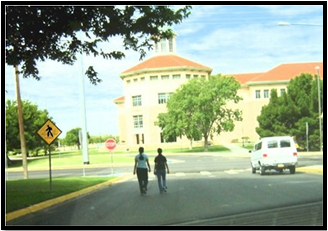
can be unpredictable, so expect the unexpected. - Even if they are subject to traffic fines, some bicyclists and utility carts users will ride the wrong way, charge across pedestrian crosswalks, and run stops signs.
- As a motorist, you are more likely to be charged and held liable for damage and injury.
- Drivers must ensure that there is sufficient room to stop for, approach or pass the vulnerable road users. Watch for bicyclists before opening car doors.
- Minor deviations in travel direction can affect nearby individuals. Don’t drive distracted or after consuming
medicines or other drugs.
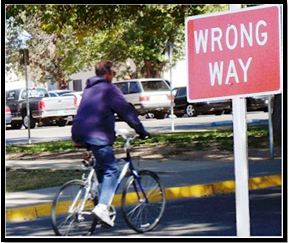
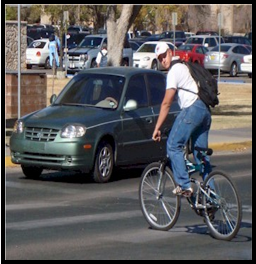
Pass Bicyclists and Utility Carts With Care
- Treat bicyclists and utility carts as you would
slow-moving cars. Don’t tailgate, and do wait until
traffic conditions allow you to safely pass them.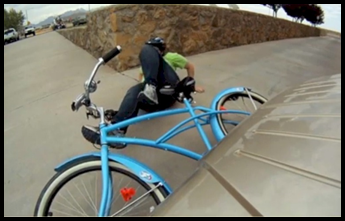
- Reduce speed when passing and allow at least
3 feet of passing space (5 feet separation by larger vehicles). Check your mirror or over your shoulder after passing before moving back. - Bicycles and utility carts on the campus streets are vehicles with same rights and rules as a motorist.
- Bicyclists and campus utility carts are allowed to use the entire lane when necessary.
- Don’t use your horn in close proximity to bicyclists. Scan for bicyclists in traffic and give them the appropriate right-of-way. Recognize the road hazards that bicyclists and utility carts face and give them space to maneuver.
Drive the Speed Limit and Avoid Congested Campus Areas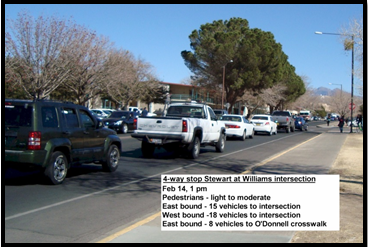
.
- Obey speed limits and come to a complete stop at stop signs. Note that the speed limit in the parking lots and campus housing areas is 15mph.
- Allow extra time to travel across campus when classes are in session. Some intersections and mid-block crosswalks are extremely crowded during class changes.
- Often these risky congested areas can be avoided by taking an alternate route or waiting for a less congested time.
More on Distracted Driving
Distracted driving is new stuff, right? Sure, but check out this National Safety Council vintage film from 1953 at
http://www.youtube.com/watch?v=D-qiQh4mrHA&feature=youtu.be
It’s one of the very first to discuss driver distractions and the importance of the brain while driving! Join in spreading awareness about the problems of cell phone distracted driving.
